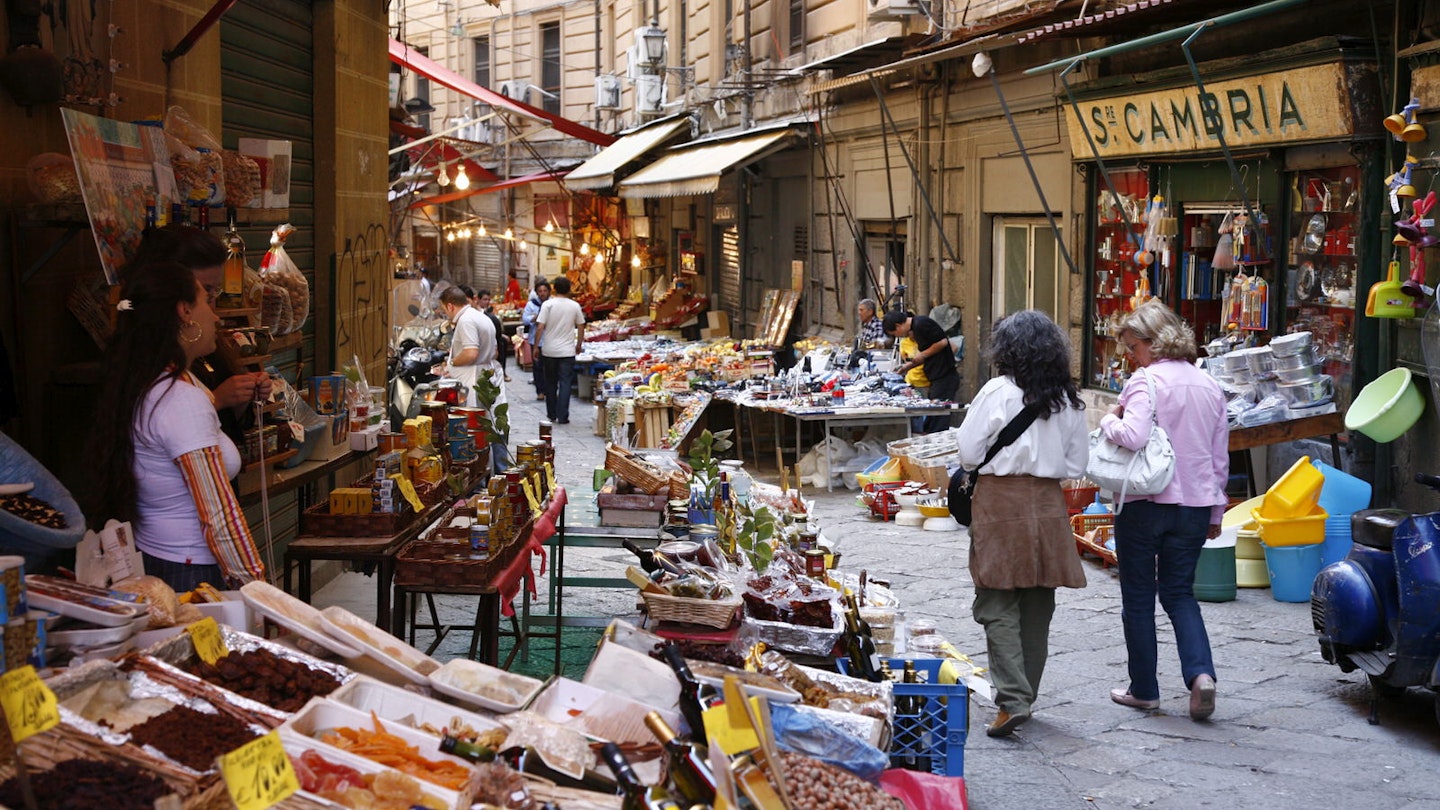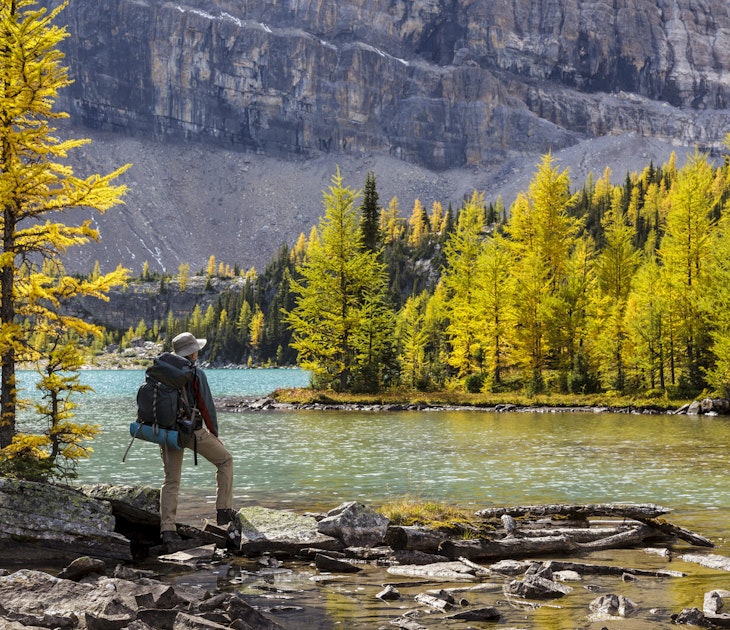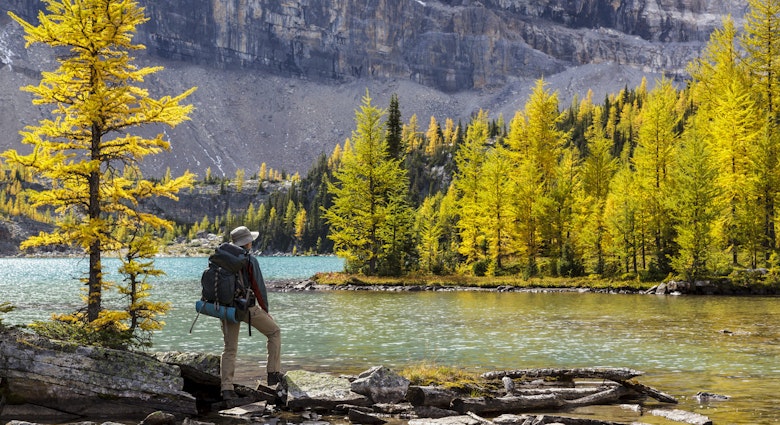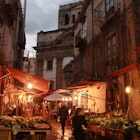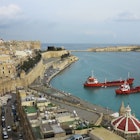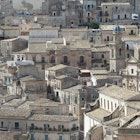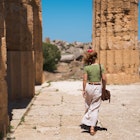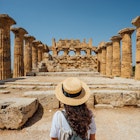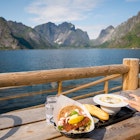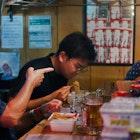Palermo is a beguiling city, set like a jewel in the fan-shaped Conca d’Oro plain between two rocky promontories. For almost three millennia, empire after empire has colonised the place, depositing fragments of language, art, architecture, cuisine and customs that make it a fascinating mirror of Mediterranean history and culture over the centuries.
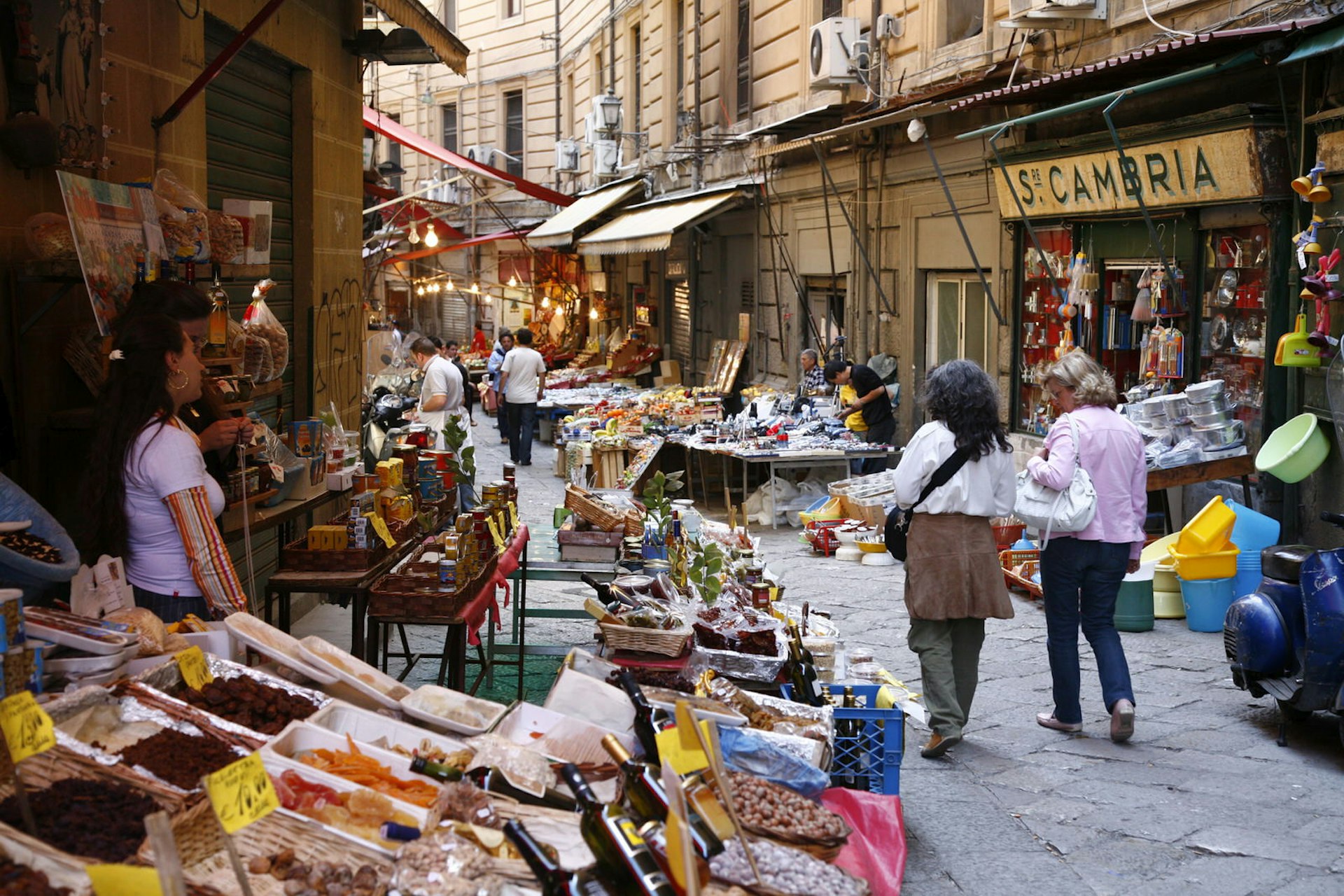
Ancient Greek treasures
Phoenicians, Greeks, Romans, Normans, Saracens, Germans and Spaniards have all left their mark on Palermo. The Greeks left more Doric temples in Sicily than in Greece itself, and Palermo’s Museo Archeologico Regionale possesses one of the richest collections of Punic and Greek art in Italy.

Rooms clustered around the complex’s cobbled cloister contain a rare series of metopes (sculptural reliefs) from the ruined Greek temples of Selinunte, a fragmented Gorgon’s head and a room ringed with 19 roaring lions. The lions once formed a monumental fountain at Himera – a city destroyed in 409 BC by Phoenician general Hannibal, who would later lead his elephants across the Alps to the doorstep of Rome.

Arab-Norman splendours
When the Greek and Roman empires fell, Palermo was occupied by the Saracens, who transformed the skyline with their oriental domes. Many of the city’s honey-coloured buildings still sport elegant arches, geometric mosaics and arabesque friezes, including the hybrid baroque cathedral, which was once Palermo’s great mosque until Norman King Roger I reconsecrated it in 1072 when he crowned himself Count of Sicily.
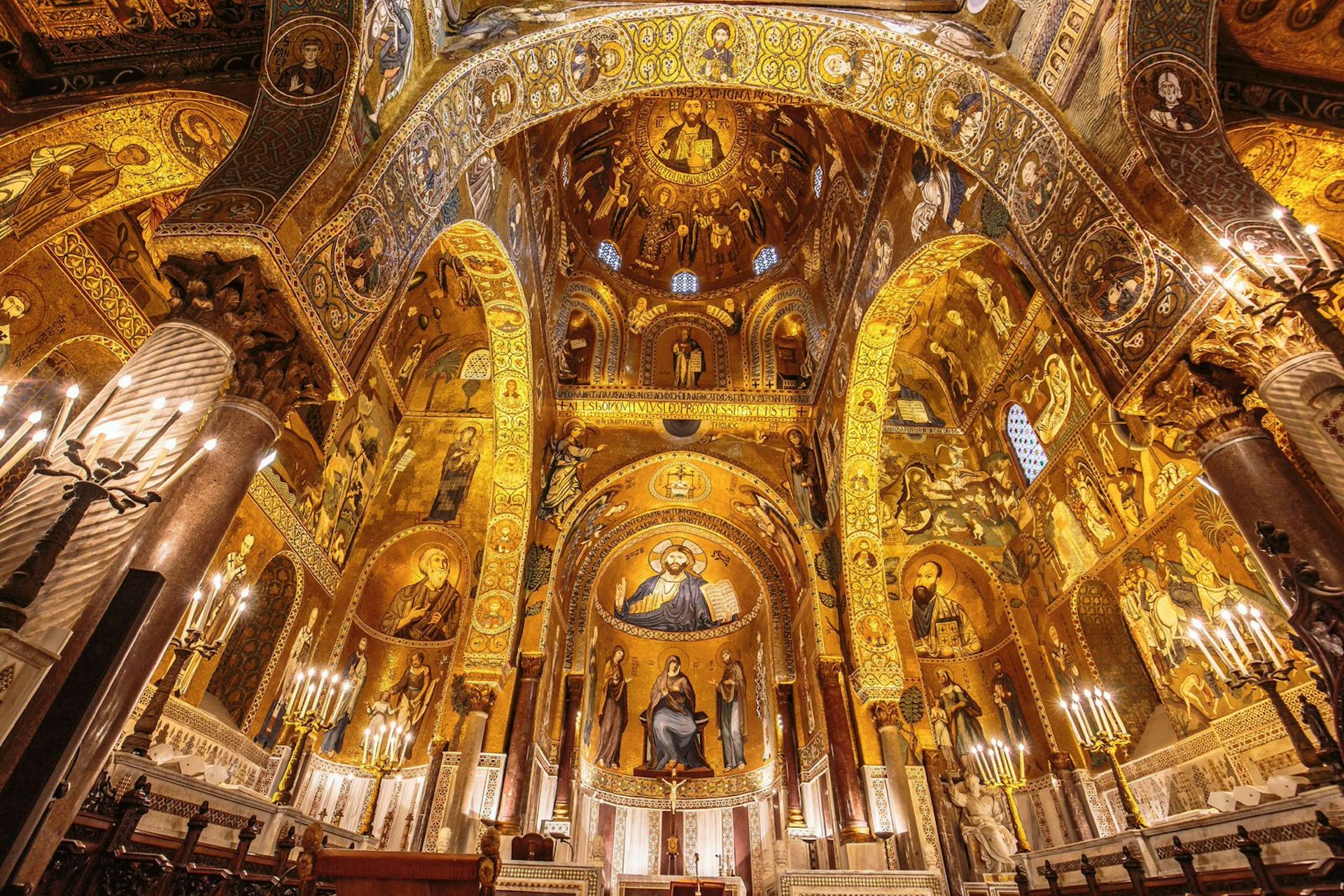
Impressed by the cultured Arab lifestyle, the Norman kings opted for a policy of reconciliation. Roger II wore Saracen robes and even kept a substantial harem, and set the court’s army of Arab engineers to work on his magnificent Palazzo dei Normanni. Now the seat of the Sicilian parliament, the palace has a fortress-like exterior that belies the exquisite decoration of Roger’s apartments (visitable by guided tour), which are decorated with Persian peacocks, palms and leopards. Likewise, in the shimmering Cappella Palatina on the first floor, Eastern influences are evident in the inlaid marble floors and the intricate muqarnas (stalactite) ceiling typical of the artistic fashions of Iraq’s Abbasid period.
Street life and atmospheric markets
As the centuries rolled on and Palermo was shattered by earthquakes and occupations, its Kasbah-style streets were overlaid with a fanciful 17th-century baroque style, typified by the city’s central piazza, the stage-set Quattro Canti (Four Corners). But though the surface of the city changed, North African street culture remained in the city’s thriving markets: Vucciria, Ballarò and Capo.

In dialect, Vucciria means something like ‘hubbub’, and the market is filled with the sound of pirated rock music and vociferous stallholders extolling the virtues of their fanfaro fish, sautéed snails or panelle (chickpea fritters). Likewise, Palermitan’s still prefer to live much of their lives out in the streets. Wander down the canyon-like alleys of La Kalsa or Albergheria and you’ll spot neighbours chatting on adjacent balconies, fruit vendors hauling up baskets of groceries to housewives in top floor apartments and office workers congregated around market stalls gossiping about the latest political scandal.

Street food
Just as in Middle Eastern souqs, street food is an integral part of Palermitan life. It reflects the diversity of the city’s multicultural past and suits the Palermitan disinclination to invite strangers into the privacy of their homes. Thus, the daily buffet thrives at friggitorie (fry shops) such as Friggitoria Chiluzzo, which serves up arancine (rice balls stuffed with meat sauce), panelle and potato croquettes known as cazilli (little pricks). Smaller enterprises specialise in just one or two items, such as the braziers in Piazza Caracciolo that serve up wine-soaked skewers of stigghiole (lamb or goat intestines wrapped around stalks of parsley) or Rocky Basile’s ever-popular stall serving pani ca meusa (bread rolls stuffed with sautéed beef spleen).

Graze your way through this parade of snacks and the multicultural influences are startling. Romans introduced the chickpeas found in panelle; Saracens gave Sicilian cooking its unique sweet, sour and spicy flavours showcased in the island’s signature dish, caponata (sweet and sour aubergine); Germans added barbecued meat; and, finally, Spaniards added New World treats like chilli, sweet pepper and chocolate. Take a tour with Palermo Street Food and you’ll learn much about the city’s exotic food history.
Decadent desserts
Even the Sicilian mania for ice-cream has its origins elsewhere, probably in Middle Eastern sarbat (a concoction of sweet fruit syrups chilled with iced water), although its evolution into granite, cremolata, cassata gelata and gelato is thanks to the island’s knack for fusion. Strictly speaking ice-cream is not an apt translation since Sicilian gelato is not made with cream but biancomangiare (blancmange), which has been an island staple for centuries. Strict practitioners include the award-winning Brioscià, Gelateria del Cassaro and Il Signor di Carbognano, who serves his dark Modica chocolate gelato the traditional way – in aromatic brioche buns.

Pastries and confections are a Palermitan speciality, too, evolved to a high art in the city’s multitude of Renaissance convents. A font of creativity, convents strove to outdo each other in the magnificence of their marzipan sweets, fruit conserves and sfinci (fried honey puffs). Peer in the windows of historic pasticcerie Cappello and Antico Caffè Spinnato and you’ll see the most famous of these, the minni di virgini (virgin’s breasts) custard tarts designed in honour of Saint Agatha’s gruesome martyrdom; and the frutta di Martorana, marzipan sweets crafted into lifelike fruits such as deep purple figs oozing drops of crystalline sugar, made in October to celebrate Ognissanti (All Soul’s Day).
Marionette theatre
Another typical sweet, much loved at Ognissanti, are pupi ri zuccaru, marzipan models of Sicilian chivalric puppets representing knights and paladins alongside the modern equivalent: footballers and TV personalities. The sweet is linked to Palermo’s Opera dei Pupi (puppet theatre), a folkloric tradition recognised by Unesco as part of the city’s intangible cultural heritage and showcased over three floors in the Museo Internazionale delle Marionette.
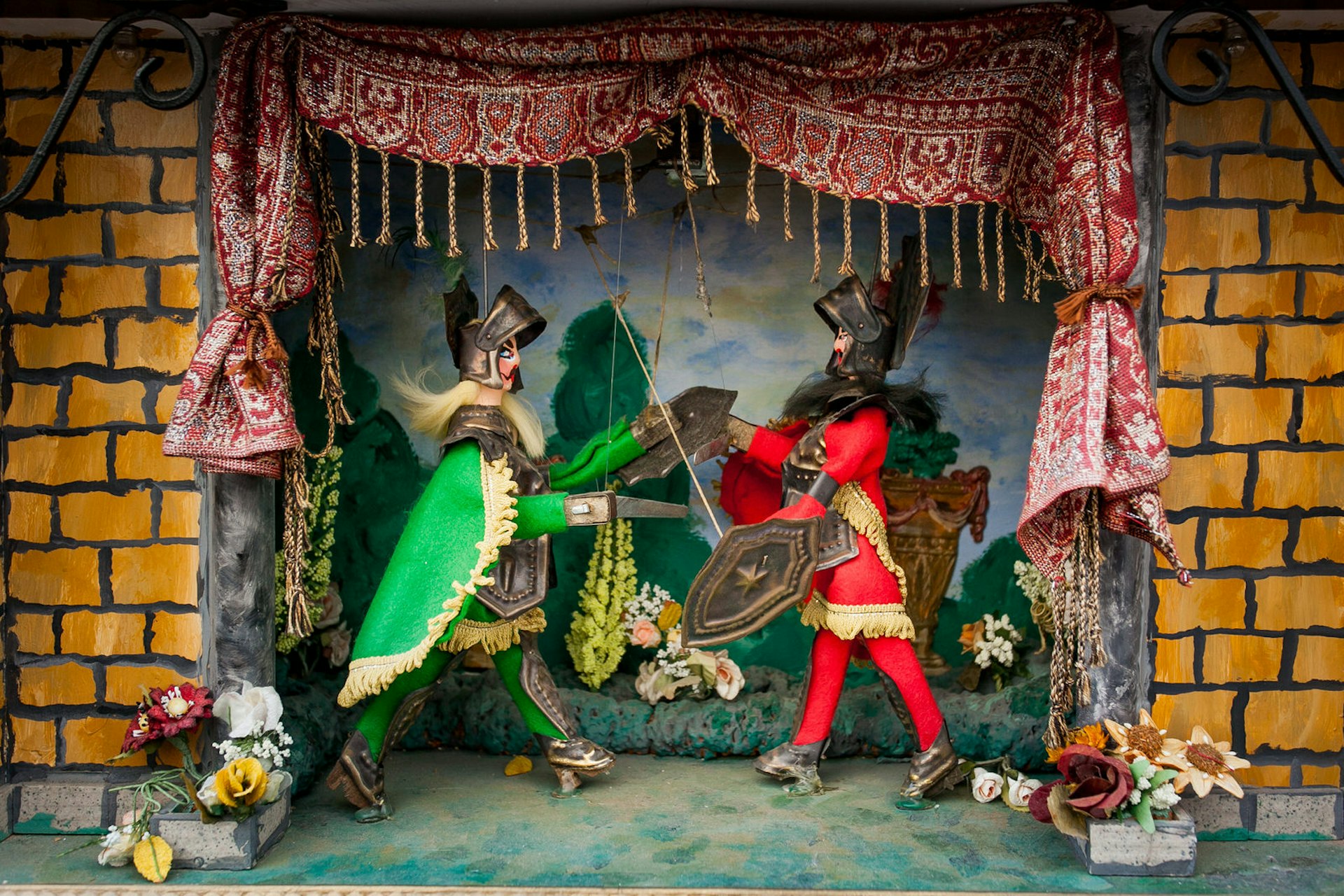
Although puppet theatre was popular throughout medieval Europe, Palermo’s hand-painted, wire-jointed marionettes took on their chivalric form in the 18th century when Frankish tales, such as the Song of Roland and Orlando Furioso, were all the rage. With storylines heavy with treachery, heroism and tragedy, the plays subversively dramatised the era’s current affairs and everyday frustrations, thrilling audiences with swift and violent justice as villains lose their heads and limbs spurt a satisfying squirt of red beetroot juice. Join the foot-stamping, cheering audiences at Mimmo Cuticchio’s theatre on Via Bara all’Olivella.

